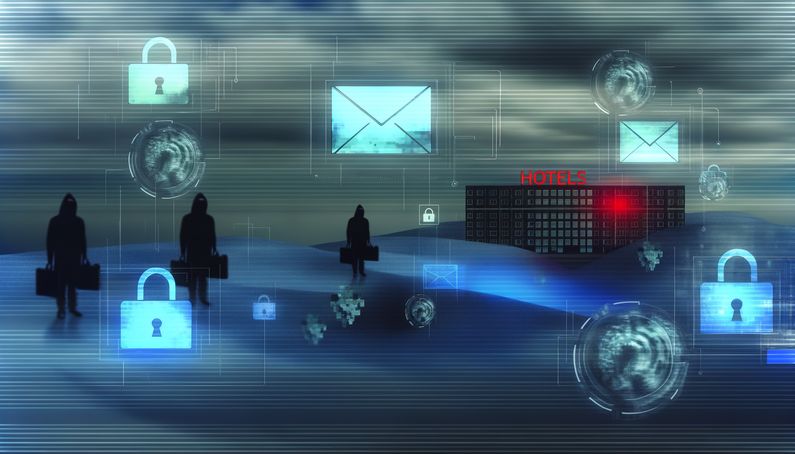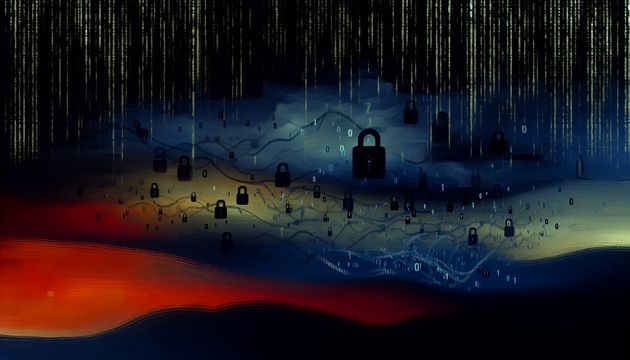
Understanding the ClickFix Phishing Threat to the Hospitality Industry
The ClickFix attack represents a significant threat to the hospitality industry, particularly targeting platforms like Booking.com. This phishing campaign, first identified in December 2024, has evolved into a sophisticated operation that exploits the trust hospitality workers place in these platforms. The attackers, known as “Storm-1865,” employ social engineering tactics to impersonate legitimate communications from Booking.com, making it difficult for recipients to discern the authenticity of the messages (Bleeping Computer).
Phishing emails in this campaign often masquerade as urgent inquiries or alerts, prompting quick action without verification. This urgency is a hallmark of phishing schemes, designed to bypass the recipient’s usual caution. The campaign’s sophistication is further evidenced by its use of fake error messages that trick users into executing malicious commands, leading to the installation of malware such as infostealers and remote access trojans (RATs). Infostealers are programs that secretly collect sensitive information like passwords and credit card details, while RATs allow attackers to control a victim’s computer remotely (TorchLight).
Phishing Campaign Targeting Booking.com
Evolution of the ClickFix Phishing Campaign
The ClickFix phishing campaign, which began in December 2024, has evolved into a sophisticated threat targeting the hospitality industry. Initially identified by Microsoft security researchers, this campaign exploits the trust and reliance hospitality workers place in platforms like Booking.com. The attackers, tracked as the group “Storm-1865,” have refined their techniques to include social engineering tactics that impersonate legitimate Booking.com communications (Bleeping Computer).
The phishing emails often masquerade as inquiries about negative reviews, requests from prospective clients, or account verification alerts. These emails are crafted to appear urgent, prompting recipients to act quickly without verifying the authenticity of the message. This urgency is a common tactic in phishing schemes, designed to bypass the recipient’s usual caution and critical thinking.
Techniques and Tools Used in the Campaign
The ClickFix campaign employs a variety of techniques to deliver its payload. One of the primary methods involves fake error messages that prompt users to perform a “fix” by entering commands into their systems. These commands are often malicious PowerShell scripts that download and install malware such as infostealers and remote access trojans (RATs) on both Windows and Mac devices (TorchLight).
The malware used in these attacks includes well-known variants like AsyncRAT, DanaBot, DarkGate, and Lumma Stealer. These tools are capable of stealing sensitive information, including financial data, login credentials, and personal identification details. The stolen data is often sold on dark web marketplaces, posing further risks of identity theft and financial fraud.
Impact on the Hospitality Industry
The impact of the ClickFix phishing campaign on the hospitality industry is significant. Hotels, travel agencies, and other businesses that rely on Booking.com for reservations are particularly vulnerable. The attackers aim to hijack employee accounts on the platform, allowing them to access customer payment details and personal information. This not only compromises the security of the affected businesses but also erodes customer trust (Infosecurity Magazine).
The financial losses resulting from these attacks can be substantial. In addition to direct monetary theft, businesses may incur costs related to data breach notifications, legal fees, and reputational damage. The hospitality industry, which is already facing challenges due to the global pandemic, is particularly susceptible to these additional financial burdens.
Defensive Measures and Recommendations
To defend against the ClickFix phishing campaign, organizations must implement a multi-layered security strategy. Microsoft recommends several best practices, including verifying the legitimacy of the sender’s address, being cautious of urgent calls to action, and independently verifying account status by logging into the Booking.com platform directly (Bleeping Computer).
Additional defensive measures include:
- Email Security and DNS Filtering: These tools can block harmful links and emails before they reach the recipient.
- Antivirus and EDR (Endpoint Detection and Response): These solutions detect and stop malware in real time.
- Firewall Policies and Regular Updates: Keeping systems patched and secure helps close vulnerabilities.
- Phishing Awareness Training: Educating employees to recognize and avoid scams is critical.
- 24/7 Monitoring: Continuous monitoring of assets and user accounts can help detect threats early and apply prompt mitigation actions (TorchLight).
The Broader Implications of the ClickFix Campaign
The ClickFix campaign is part of a broader trend of increasing phishing attacks. In 2024 alone, over 932,000 unique phishing sites were detected worldwide, with phishing emails increasing by 1,265% and credential-stealing attacks growing by 967% compared to 2022 (TorchLight). These numbers highlight the evolving nature of phishing attacks, which are becoming more complex and harder to detect.
The persistence of multiple stealer malware variants in ClickFix attacks presents a significant threat. Even after one variant is detected and removed, the remaining malware can continue collecting user data. This data may end up for sale on dark web marketplaces, leading to secondary risks like phishing attacks (Criminal IP).
Overall, the ClickFix phishing campaign targeting Booking.com and the hospitality industry underscores the need for robust cybersecurity measures and ongoing vigilance. As threat actors continue to refine their tactics, organizations must remain proactive in their defense strategies to protect sensitive data and maintain customer trust.
Final Thoughts
The ClickFix phishing campaign underscores the critical need for robust cybersecurity measures within the hospitality industry. As attackers refine their tactics, organizations must adopt a proactive defense strategy to protect sensitive data and maintain customer trust. The financial and reputational damage from such attacks can be substantial, especially for an industry already facing challenges due to global events (Infosecurity Magazine).
Implementing a multi-layered security approach, including email security, DNS filtering, and continuous monitoring, is essential. Additionally, educating employees about phishing threats and maintaining vigilance can significantly reduce the risk of falling victim to such scams (TorchLight). As phishing attacks become more complex, the hospitality industry must remain vigilant and adaptable to emerging threats.
References
- Bleeping Computer. (2024). ClickFix attack delivers infostealers, RATs in fake Booking.com emails. https://www.bleepingcomputer.com/news/security/clickfix-attack-delivers-infostealers-rats-in-fake-bookingcom-emails/
- TorchLight. (2024). Beware of the ClickFix scam. https://torchlight.io/blog/beware-of-the-clickfix-scam/
- Infosecurity Magazine. (2024). Booking.com customers targeted. https://www.infosecurity-magazine.com/news/bookingcom-customers-targeted/
- Criminal IP. (2024). ClickFix fake error messages. https://blog.criminalip.io/2024/10/07/clickfix-fake-error-messages/



